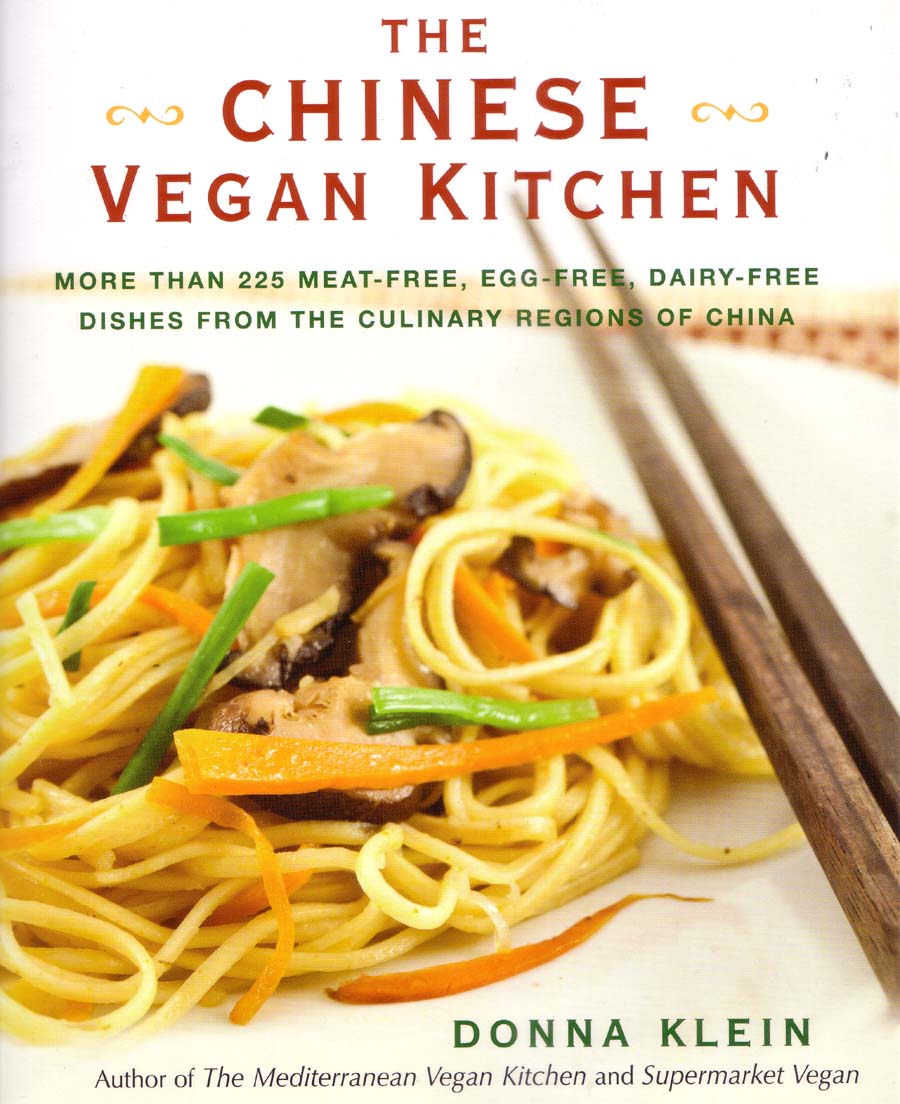|
Read 12924327 times
Connect me to:
|
Chinese Vegan Kitchen, The by Donna Kleinby: Donna Klein
New York NY:
Penguin Group, The 2012, $18.95, Paperback
ISBN: 978-0-399-53770-7
Reviewed by: Jacqueline M. Newman
Spring Volume: 2014 Issue: 21(1) page(s): 35 and 36
 Written by the author of several cookbooks, most are vegan, the recipes are meat-fee, egg-free, and dairy-free, and said to be "easy yet authentic recipes from the various culinary regions of China..." Written by the author of several cookbooks, most are vegan, the recipes are meat-fee, egg-free, and dairy-free, and said to be "easy yet authentic recipes from the various culinary regions of China..."
There is not a single picture illustrating any of the dishes other than the one color photo on the front cover of a noodle dish, not even on a place to illustrate this recipe collection of dishes is from many culinary regions of China. A large number of the recipes do include their location of origin or use in their titles, and every one give per serving calorie, protein, total fat, saturated fat, cholesterol, carbohydrate, dietary fiber, and sodium content. Teacher Donna spent one year as a 'WorldTeach' volunteer teaching English at the Yali Nanya Middle School in Changsha in China's Hunan Province. She also spent time at the 'English corner' assume it was in the same city. The recipes are indeed simple and able to be duplicated as all ingredients are not difficult to locate in large supermarkets in bigger cities in the United States. She calls the 'authentic' dishes 'highly conducive to healthy plant-based eating,' and are most often limited to those with varieties of soy sauce, hoisin sauce, sesame oil, and Chinese rice vinegars. For those without expertise in sophisticated Chinese tastes and preparations, this is a great beginning Chinese cookery volume. The dishes are basically quick, easy, and without many ingredients needing measuring at various times in the preparation of a dish. Do have a few beef's, pardon the animal intrusion, relating to accuracy. Klein says 'seitan' is 'wheat gluten.' This food product, popular among macrobiotic folk, has origins not in China, and it is not old. The word was coined by a Japanese chap in that country in the 1960s. Technically, it is wheat gluten, not vital wheat gluten, and with soy sauce. There is an error with the correct spelling of a very large Chinese province. There is no such place as Zhenjiang, no such product as Zhenjiang vinegar, etc. When one reads the label of that bottle; it is Zhejiang vinegar made in the Zhejiang Province. For those who know not, this rice vinegar can replace balsamic vinegar, but we do not recommend it to someone with celiac disease because some balsamic vinegars have wheat among the ingredients. People with celiac disease should read these and all labels carefully before using a product. |

 Written by the author of several cookbooks, most are vegan, the recipes are meat-fee, egg-free, and dairy-free, and said to be "easy yet authentic recipes from the various culinary regions of China..."
Written by the author of several cookbooks, most are vegan, the recipes are meat-fee, egg-free, and dairy-free, and said to be "easy yet authentic recipes from the various culinary regions of China..." 